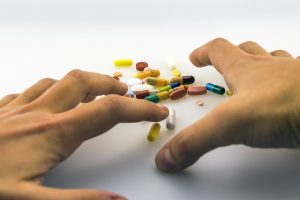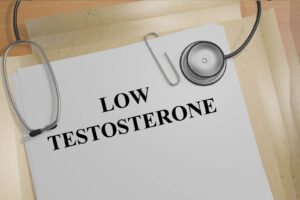Medication-Assisted Treatment: Is it for You?

Hearing about the opioid epidemic and living through it are two very different things. Watching a friend or family member struggling with addiction to drugs like heroin or even prescription painkillers is heart-wrenching. This leaves many people wondering what they can do to help and what types of treatment options are currently available.
The opioid epidemic was really heralded by an influx of prescription medications that were originally thought to be safe. People were constantly reassured that these medications weren’t addictive, and by the time we learned otherwise, it was too late.
Now, we’re left trying to figure out how to help people with so few resources. This has led to a wider acceptance of the use of medication-assisted treatment programs. These programs utilize medications like methadone or Suboxone/Buprenorphine in an effort to help people resist the urge to use drugs. The majority of these programs are combined with other treatment methods to create one very effective safety net for those struggling with an addiction to both illicit and prescription opioids.
Unfortunately, the stigma surrounding the use of medications to treat an addiction to drugs has made these programs particularly suspect to many people who don’t understand the treatment industry.
Explaining Medication-Assisted Treatment
Medication-assisted treatment (MAT) was born in the 1930s amidst a rise in the use of morphine and opium. It’s one of two primary treatment options, the other being the promotion of complete abstinence from substances altogether. When it comes to the opioid epidemic, MAT treatment remains the most effective way to help people who are dependent on this class of drugs.
Opiates refer to any drugs that are derived from the naturally occurring opium poppy. These drugs actually mimic some of the brain’s natural neurotransmitters, and work to promote a feeling of deep peace and euphoria.
They have practical purposes in the medical field for treating pain and for helping those who suffer from terminal illnesses. These medications are also some of the most addictive in existence because the way that they affect the brain.
For a person who is already predisposed to addiction, the introduction of anything opiate-based is a recipe for disaster. Their brains will overreact to the effects of the drug, and they quickly develop a tolerance and a chemical reliance resulting in dependency.
It doesn’t take long for their brain to become completely dependent on these drugs, and when levels start to drop they experience almost immediate withdrawal symptoms. These withdrawals lead many people to continue using drugs just to avoid the physical discomfort.
Medications like methadone and buprenorphine have been used to successfully wean people off these dangerous drugs for decades. There is some debate amongst the medical community about the most effective medications for this type of treatment. Buprenorphine versus Methadone has been an age-old argument, with methadone continually winning out over other drugs.
How Does MAT Work?
MAT medication will stimulate the opioid receptors and help to stop the cravings for illegal drugs. This can only work when the patient is closely monitored, and when they are able to abstain from the use of other drugs.
Usually, MAT is started during intensive treatment, and only continued after it shows signs of success. The treatment itself can go on for months and is really based on the need of that particular person. No two people suffer from addiction the exact same way, and because of this treatment methods need to be carefully utilized.
The use of medications like methadone also make illicit opioids, like heroin, less effective. This is because those needs are already being met within the brain, and the additional opioids don’t have a place to go. Unfortunately, this can also lead to an easy overdose for a person who doesn’t have control over their addiction.
Treatment methods—such as counseling or therapeutic activities—are used in conjunction with medications like methadone to give the person the best possible chance of success.
Medications Used to Treat Addiction
There are a number of medications used to treat addiction, and the majority of them are a form of extended release opioids geared towards controlling the addiction. The primary medications used to treat addiction include:
- Methadone: Methadone is the most commonly used medication in MAT. Sold under the name brand Dolophine, it’s an opioid that can be used on a short-term basis to treat extreme pain or on a long-term basis to help addicts refrain from illicit drug use. The extended release effects usually last for 12-36 hours and help to keep withdrawals at bay with a single daily dose.
- Suboxone/ Buprenorphine:This medication was designed specifically for opioid dependence. Buprenorphine isn’t used to treat pain and isn’t used in any other capacity other than to treat addiction. It’s a mixture of an opioid and naloxone, which is designed to block opioid receptors. This means that it staves off withdrawals while preventing a person from getting high on another medication. Unfortunately, this medication can also be abused. The melt away strips have become increasingly problematic for those attempting to smuggle or abuse the drug.
Both medications can be effective, but it’s really dependent on the user. All too often, a person who isn’t serious about treatment will end up abusing the drugs and lose the privilege for MAT permanently.
What Can MAT Treat?
Only a person who’s truly dedicated to their recovery will benefit from taking any type of medication to help with their addiction. If a person is still tempted to use or they still don’t have any control over their drug habits, then they may abuse the medications being given.
MAT can definitely treat opioid addiction very effectively and has better long-term results than almost any other method of treatment. Because of this, it remains popular, and professionals are cautiously optimistic.
Taking medications like methadone will actually help to eliminate withdrawal issues and can allow a person to focus entirely on other methods of treatment. This lends itself to more effective therapy and a better chance of avoiding drug triggers that they would otherwise have on their own.
Imagine being hopelessly addicted to a drug like heroin and injecting yourself frequently throughout the day. As soon as you make the decision to stop, you’ll start to experience withdrawals within hours of your last dose. These withdrawals can include everything from fevers to a violently upset stomach and can completely disrupt your life.
They last more than a week, and many people will continue using just to avoid them. A single dose of extended-release methadone can stop most of these withdrawals from being as disruptive and can help a person to stop themselves from going back to drugs.
Is MAT for You?
This form of treatment can only work if a person really wants to make it work. It’s very tempting for an addict to gain access to a new drug and then to abuse it; that’s why these programs are so closely monitored and require complete compliance from the person participating in them.
With the right combination of personal fortitude and a treatment program that fits your lifestyle, you can reach recovery. Everyone deserves a chance to live a better life, and medication-assisted treatment can help to give you that.






